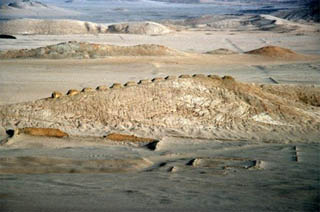The Archimedes Palimpsest
Just to prove that recycling can be useful: the Archimedes Palimpsest has traces of works by Archimedes, Hyperides and Aristotle.
The prayer book was written in the 13th Century by a scribe called John Myronas.When ancient recycling techniques meet modern scientific techniques - who can say how many other interesting "palimpsests" will begin to yield up their secrets in the next few years.But instead of using fresh parchment for his work, he employed pages from five existing books.
Dr Noel, curator of manuscripts at the US-based Walters Art Museum and a co-author of a forthcoming book on the Archimedes Palimpsest, said: "It's a rather brutal process, but it means you can reuse parchment if you are short of it.
"You take books off shelves, you scrub off the text, you cut them up and you make a new book."
In 1906 it came to light that one of the books recycled to form the medieval manuscript contained a unique work by Archimedes.
And in 2002, modern imaging technology not only provided a clearer view of this famous mathematician's words, but it also revealed another text - the only known manuscript of Hyperides, an Athenian politician from the 4th Century BC.
But now advanced imaging technology has revealed a third text - a commentary on the philosopher Aristotle.
The "Lost Library of Alexandria" might have been right under our noses alll the time - in the form of recycled parchment - and all we needed was modern technology to read it.
Tags: palimpsest, archimedes palimpsest, lost knowledge, alexandria, techno-archaelology, fortean
